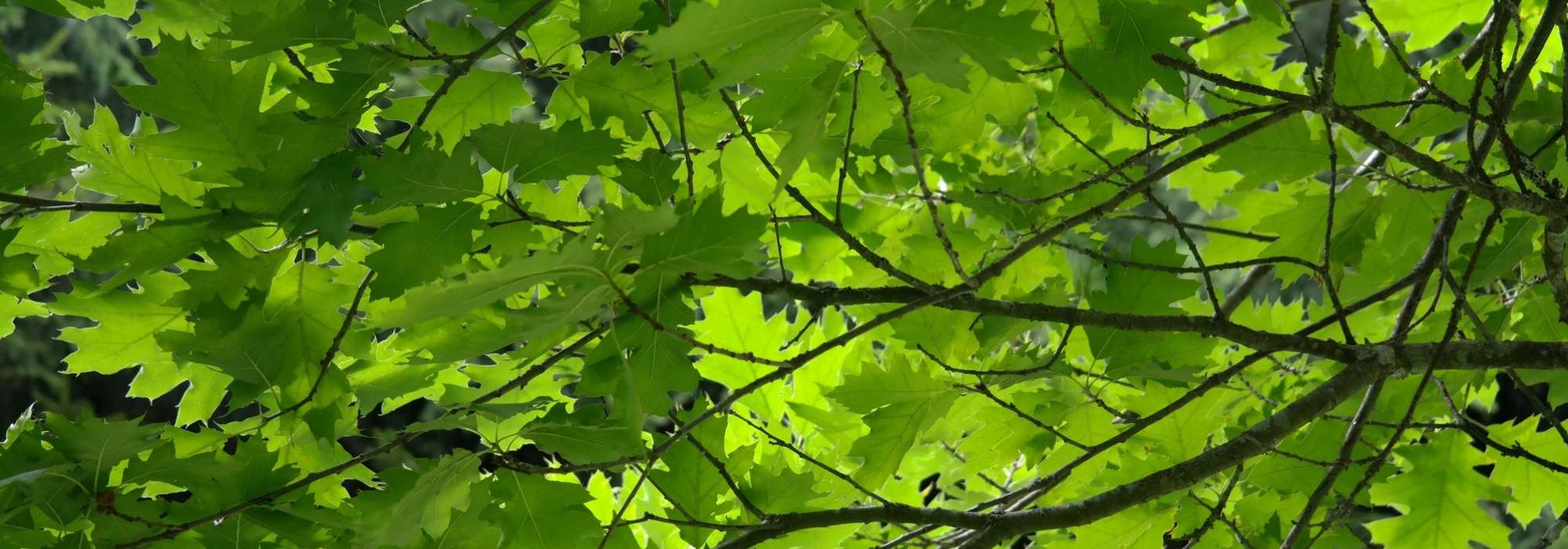
Oaks: planting, pruning and care
Contents
The Oak, in a nutshell
- Oak is a tree found on all continents, often venerable and renowned for its robustness and great longevity.
- In our region, the shape of its lobed leaves and the presence of acorns make it easily identifiable, but there are a multitude of forms around the world.
- Red oaks are prized for their scarlet foliage in autumn, while green oaks and cork oaks feature small, tough, evergreen olive-green leaves that are appreciated in urban alignments.
- The growth of oaks is generally quite slow, and their wood is highly regarded.
A word from our expert
Mixed oak forests with beech tend to occupy all the temperate regions when human intervention is absent. This is referred to as climax, which denotes a state of equilibrium between the soil and vegetation. Thus, a clearing or a burned area tends to become an oak forest after various stages of recolonisation of the medium. The oak possesses an aura that may stem from this fact but also from its legendary longevity and its presence. It symbolises strength, wisdom, majesty, and endurance, and was the subject of pagan cults; Saint Louis rendered justice under a centuries-old oak…
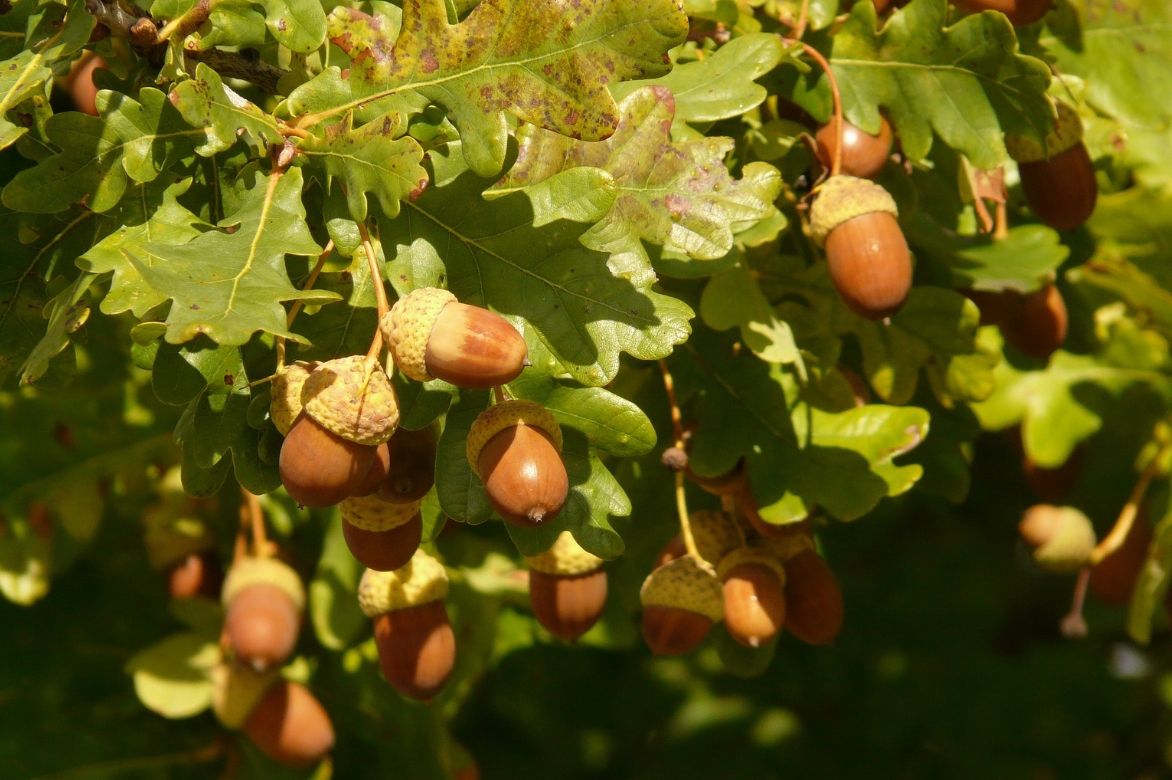
The acorns, fruits of the oak
The genus Quercus, which is the scientific name of the oak, includes over 400 species that, like beech and chestnut, belong to the family Fagaceae. These are trees or bushes that are highly polymorphous with deciduous or evergreen leaves, exhibiting very variable shapes and sizes. The kermes oak (Quercus coccifera), about 1 m tall, has spiny and leathery leaves less than 1 cm long, while Q. dentata produces lobed leaves that can sometimes exceed 30 cm in length.
The oak, so common in our forests, is ultimately quite underused in park and garden landscaping given the extraordinary diversity that exists within the genus. Their large size, which is not well-suited to urban gardens, their relatively slow growth, their discreet flowering, and especially the lack of awareness of their diversity likely contribute to the little interest they receive. The acorns of oaks constituted the staple food for many tribes who lived primarily by foraging, both in Europe and America, and even in France during times of famine. The “racahout of the Arabs” is a powder for children that was sold in France until the early 20th century.
Description and Botany
Botanical data
- Latin name Quercus sp.
- Family Fagaceae
- Common name Oak
- Flowering between May and June
- Height between 1 and 40 m
- Sun exposure sun
- Soil type fresh to dry soil depending on species
- Hardiness Good to excellent (-15 to -40°C)
The oak, known as Quercus in Latin, has a widespread distribution across the globe, ranging from temperate to tropical montane environments, from Mexico to Southeast Asia, and as far as New Guinea. ‘Quercus’ is thought to derive from the Celtic “kaerquez”, which translates to “beautiful tree”.
Depending on the species, it can be found in both dry Mediterranean-type soils, such as the holm oak (Quercus ilex) and cork oak (Quercus suber), as well as in waterlogged soils like the scarlet oak (Quercus coccinea). There are 429 species, with over half (234) originating from North and Central America (154 from Mexico alone), 156 from Asia, and 39 from Europe. In France, there are 10 species of oaks found in the wild, including 6 deciduous species (Quercus cerris, Q. faginea, Q. petraea, Q. pubescens, Q. pyrenaica, Q. robur) and 4 evergreen species (Quercus coccifera, Q. ilex, Q. rotundifolia, Q. suber).
Indigenous oaks such as the sessile oak (also known as the durmast oak) – the most common in France – and the pedunculate oak are renowned for their slow growth and the quality of their dense, tannin-rich wood, widely used in furniture, construction, cooperage, and heating… However, other species like the American red oak or Hungarian oak grow relatively quickly.
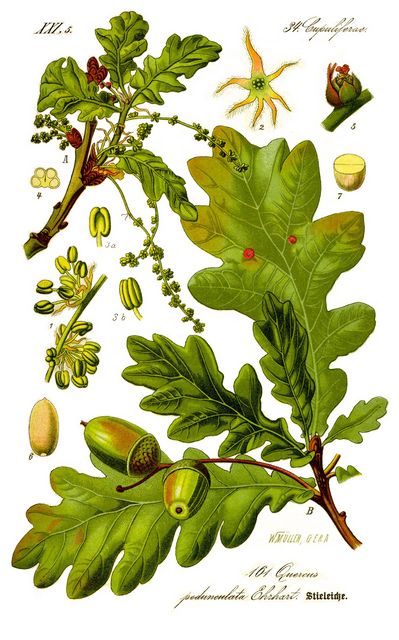
Quercus robur – botanical illustration
Oaks often display a wide and dense silhouette with a stout trunk when growing in isolation. In a stand of oaks, the trunk is much more slender and unbranched (30 to 40 m in total height), allowing for boards with few knots. Depending on the species, oaks can form majestic trees exceeding 35 m in height, which are difficult to introduce into our gardens, such as the pedunculate oak (Quercus robur) or the sessile oak (Quercus petraea). Others, of more modest stature (pubescent oak, tauzin oak, holm oak, and most horticultural forms) are better suited to the size of our gardens. The smallest, familiar to Mediterranean scrublands, are modest spiny shrubs that rarely exceed 1 m, like the kermes oak Quercus coccifera, and are perfect for a defensive hedge.
The bark of the common oak is initially smooth, often marked with whitish spots, then cracks and darkens. The cork oak develops a thick corky bark that can be harvested every 7 years to allow time for it to regenerate.
The branches are generally robust and twisted in older specimens. The foliage is alternate, and deciduous species often bear a dark green lobed foliage that persists until the heart of winter, turning brown before falling. This foliage is said to be marcescent. The size of the lamina and petiole, the presence of hairs or not on one or both sides of the lamina, and the shape of the lobes are all criteria that help differentiate our native species. However, there are natural hybridizations in areas where two species coexist, which can sometimes make identification challenging. There are many exceptions regarding the shape of the lamina, as evidenced by the chestnut-leaved oak Quercus castaneifolia (entire and dentate), and the willow oak Quercus phellos (narrow with smooth edges), etc. In contrast, the three main French evergreen species are very easy to differentiate. They primarily reside in the Mediterranean zone and along the Atlantic coast. The cork oak and holm oak have quite similar leaves, small and leathery, olive green with more or less pronounced spines depending on rainfall, but the appearance of the bark leaves no doubt. As for the kermes oak, once exploited for cochineals, cottony insects often found on the shrub that produced a red dye, it is recognized by its shrubby silhouette, rarely exceeding 1 to 2 m, and the dimensions of its leaves, which are much smaller and more spiny than those of other species.
Flowering occurs on the same tree, in the form of yellow male catkins in spring, while the reduced female flowers consist of a pistil surrounded by small petals and are barely visible.

Oaks exhibit a beautiful diversity of leaves: Quercus palustris, Quercus robur (photo Olive Titus), Quercus robus ‘Purpurescens’, Quercus myrsinifolia (photo Harum Koh)

Quercus kelloggii ‘Greyghost’, Quercus hypoleucoides, Quercus robur ‘Posnania’, Quercus petraea
The main criterion for recognizing an oak without error is the presence of acorns. This is a dry fruit with a single seed called an “achene”, topped with a cupule (a more or less enveloping and ornamental cap formed by the fusion of the bracts of the inflorescence). It is borne on a long peduncle in the pedunculate oak, absent in the sessile oak and also in the holm oak. When they reach maturity, sometimes only after 50-60 years, oaks produce a profusion of acorns in summer that persist for 1 or 2 years on the tree before falling, depending on the species. Sometimes, “white oaks” are distinguished by their leaves with rounded lobes and edible acorns maturing in the year of their formation, from “red oaks”, which have leaves with sharp lobes and acrid acorns that take 2 years to mature. In oaks, the production of acorns (acorn production) is late and particularly irregular throughout the life of the tree, which can greatly affect populations of wild boars and other animals that feed on acorns. In Corsica or Spain, in the region of Extremadura, pigs graze at the foot of holm oaks to feed on acorns, producing extremely tasty meat. When one wishes to exploit the wood of an oak forest, a few fine specimens are left, which, stressed by the sudden opening of the forest, begin to produce acorns profusely, which will seed and ensure the renewal of the plot.
Acorns contain up to 8% tannins; sweet acorns contain less but remain inedible for humans (and ruminants) in their raw state, causing constipation, kidney damage, and neurological disorders if ingested in large quantities. Tannins can be removed by leaching: soaking in cold water, renewed daily, of the acorns without their skin until the bitterness disappears, or grinding into flour and then leaching with water through a cloth… or by prolonged stay in the soil.
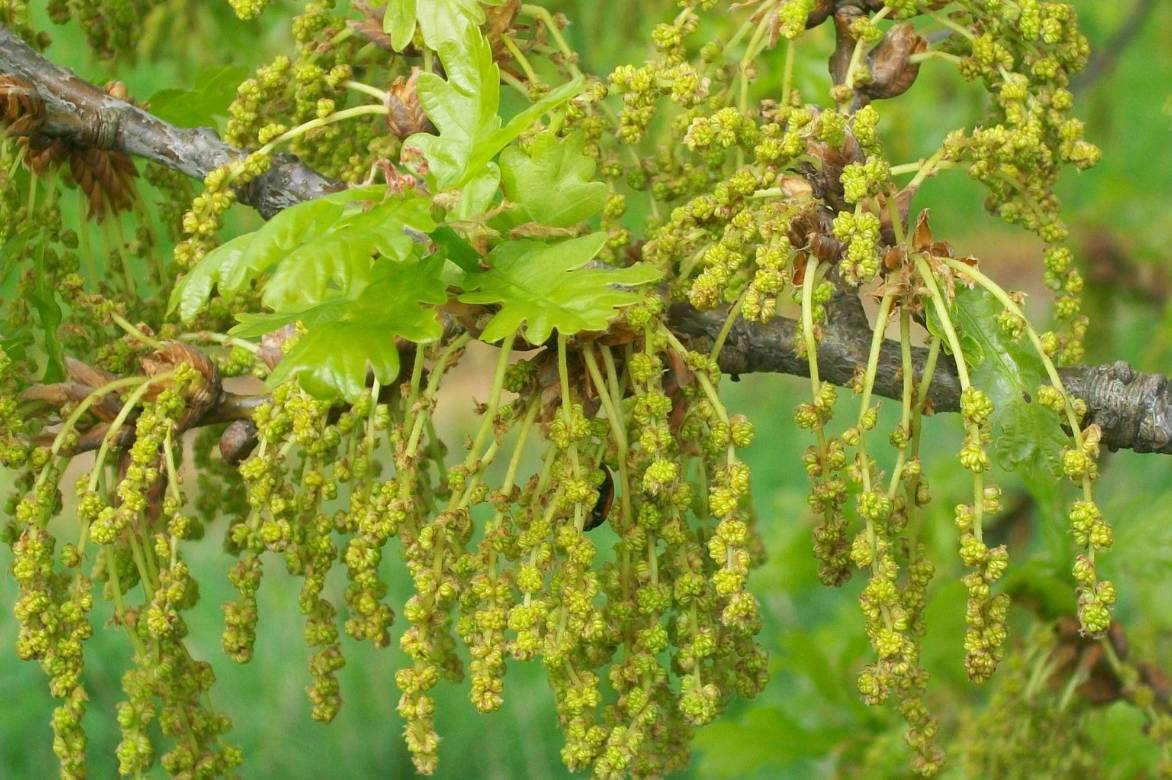
Male flowers of the oak (photo Peter O Connor Aka)
Read also
Birches: planting, pruning and careThe main varieties of Oak
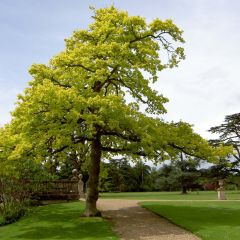
Quercus robur Concordia - English Oak
- Flowering time May, June
- Height at maturity 7 m
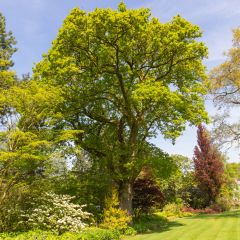
English Oak - Quercus robur
- Flowering time May, June
- Height at maturity 28 m
Quercus robur Purpurascens - English Oak
- Flowering time May, June
- Height at maturity 15 m
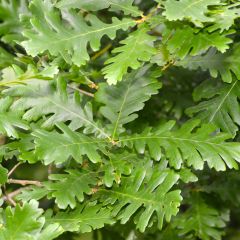
Quercus frainetto - Hungarian Oak
- Flowering time May, June
- Height at maturity 20 m
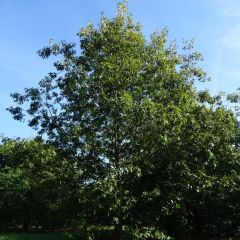
Quercus coccinea Splendens - Scarlet Oak
- Flowering time May, June
- Height at maturity 20 m
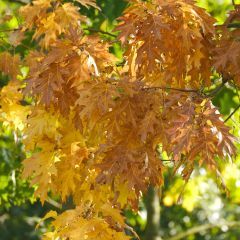
Quercus palustris - Pin Oak
- Flowering time May, June
- Height at maturity 25 m

Holm oak - Quercus ilex
- Flowering time May, June
- Height at maturity 12 m
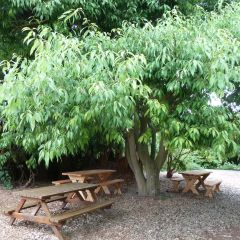
Quercus myrsinifolia
- Height at maturity 5 m

Quercus turneri Spencer Turner - Hybrid Oak
- Flowering time May, June
- Height at maturity 9 m
Discover other Oak
View all →Available in 1 sizes
Available in 1 sizes
Available in 1 sizes
Available in 4 sizes
Available in 1 sizes
Available in 1 sizes
Available in 1 sizes
Available in 2 sizes
Available in 2 sizes
Available in 1 sizes
Planting an oak
Where to Plant the Oak?
In general, evergreen species such as the Holm Oak and the Cork Oak are better suited to the gardens of southern France, Mediterranean areas, and the Atlantic coast. They tend to move northwards with climate change. Deciduous species (European or American) that thrive in cool soils are more resistant to cold (-28°C and below). However, the Hungarian Oak (Quercus frainetto), the Downy Oak (Q. pubescens), and to a lesser extent the Sessile Oak (Q. petraea) are exceptions; these large deciduous oaks adapt quite well to dry soils, just like Quercus rubra, which tolerates uncultivated soils and high summer temperatures.
Moreover, American red oaks (rubra, coccinea, palustris) require an acidic soil, like the Cork Oak, while other oaks are relatively tolerant of limestone. The Pedunculate Oak can accept temporarily flooded soils, unlike the Sessile Oak, which is better suited to dry soils. Other ‘exotic’ oaks deserve your attention, such as the Myrsine-leaved Oak Quercus myrsinifolia, reminiscent of the foliage of the camphor tree, and the Spanish Oak Quercus x hispanica ‘Wageningen’ with a columnar habit of 10-15 m, evergreen and particularly suited for urban alignments, with no specific soil or exposure requirements…
Oaks are light-loving trees, but the Holm Oak also tolerates partial shade, and the small Kermes Oak grows regardless of exposure.
The Oak has always been cultivated as an ornamental tree in parks and large gardens, where it expresses its full potential either alone or in groups as a shade tree. It shows a more harmonious development when grown in sheltered conditions, without excessive competition. As with all other garden plants, choose your oak based on the nature of your soil and climate: hardiness is -16 and -12°C respectively for Holm and Cork Oaks, which also tolerate wind, sea spray, and pollution.
And if oaks are growing spontaneously on your land, cherish them, provided you have enough space. These trees produce excellent compost and their taproot system allows for the planting of shrubs or perennials that enjoy light woodland under their canopy. They support significant biodiversity, and their acorns nourish many birds and small mammals.
When to Plant?
Plant oaks preferably in autumn to ensure deep rooting before facing summer drought.
How to Plant?
- Soak the root ball in a bucket of water to thoroughly moisten it.
- Dig a planting hole at least 3 times the size of the root ball, about 40 cm deep.
- Ensure good soil drainage with Mediterranean species to increase their frost resistance. Place a 10 cm drainage layer (gravel, sand…) if your soil is clayey.
- Add manure or decomposed compost if the soil is sandy.
- For large specimens (saplings with a circumference of 8/10 cm at 1 m from the ground), install 2 to 4 stakes (posts of 8 or 10 cm in diameter) spaced 1 m apart to support the trunk. Then use soft ties (fabric or rubber) to allow the trunk to sway slightly to stimulate root anchoring.
- Position the root ball so that the collar (the boundary between the roots and the trunk) is level with the ground, slightly below due to swelling.
- Backfill the hole to form a basin and lightly compact with your foot.
- Water thoroughly to eliminate all air bubbles.
- Spread a layer of mulch at the base to maintain good moisture around the roots. This will also limit the growth of weeds.

Majestic Oak under frost
Pruning and maintaining
Ensure deep watering every 10 to 15 days during the first three summers following planting and during dry periods.
The oak requires no further maintenance, except for formative pruning, which should not be neglected during the tree’s early years until the crown reaches the desired height.
Pruning the Oak
Formative pruning applies as long as the tree has a tapered crown, meaning a pyramidal habit. It involves ensuring that this taper is not cut or does not split into two, which is quite common in our oaks (pedunculate, sessile, pubescent, and cork oak) and in the red oak. Nature being well made, this fork usually disappears on its own after 1 to 2 years. If not, cut one of the branches before it becomes too large to restore a single taper.
Next, attend to the main branches, known as “framework” branches. Ensure they are well distributed all around the tree. Their point of insertion should be staggered along the trunk. To facilitate future access at the base of the tree, it is important to gradually raise the crown by only cutting branches of small diameter (3 to 5 cm). Don’t rush! Ensure that you maintain 1/3 of the trunk height for 2/3 of the crown. This raising of the crown is not obligatory if you wish to allow the tree the freedom to express itself in the middle of a park!
Afterwards, the oak’s crown will round out, and your role is simply to trim any branches broken by the wind or that cross each other with a clean cut. Dead wood can be tolerated to accommodate cavity-nesting birds. You may consider having a crown thinning performed by a tree climber if the tree casts too much shade. Remember that these trees are destined for a long life, spanning several centuries, and intervening as little as possible is the best way to ensure their robust health. Avoid turning your oak into a telephone pole, as is often seen. The oak is a tree whose wood compartmentalises easily, leading to good wound healing. It can withstand cuts up to 10 cm in diameter.
Given the oak’s excellent healing ability, it is entirely feasible to create trimmed hedges similar to hornbeam with species such as Quercus frainetto, Q. pubescens, and of course with evergreen oaks that have small leaves. Green oaks and cork oaks can also be shaped topiary or as curtains. Perform the pruning in September and for deciduous trees during winter and in June if necessary.
Potential Diseases and Pests
Deciduous oaks often catch powdery mildew in dry climates, which manifests as a white powder on the foliage, but this disease does not affect the tree’s life. Therefore, treatment is unnecessary, except perhaps for young trees with sulphur. Be sure to water them well during the first three years.
Defoliating caterpillars (gypsy moth, oak processionary, green tortrix) can sometimes cause significant damage to the oak’s foliage and buds. You may consider applying Bacillus thuringiensis at 8-10 day intervals, at the first signs.
The brown galls the size of a golf ball or white galls the size of a currant, which are quite common on our oaks, are perfectly tolerated by them. They are caused by the laying of a small wasp, the cynipid, with no consequences for the tree.
→ Learn more about oak galls, diseases and pests of oaks, and plant galls.
Armillaria (honey-coloured mushroom) can affect oaks in overly wet soil or when the tree is under stress, such as drought. This fungus causes the tree to dry out suddenly, often in early summer. There is no treatment, and rapid uprooting followed by burning and soil extraction is necessary to prevent the disease from spreading to other species. However, oaks are among the most resistant plants to this fungus compared to birches, willows, thujas, or cedars.
Green oaks and cork oaks are sometimes attacked by ink disease, which leads to black, tar-like exudates. Felling is then recommended.
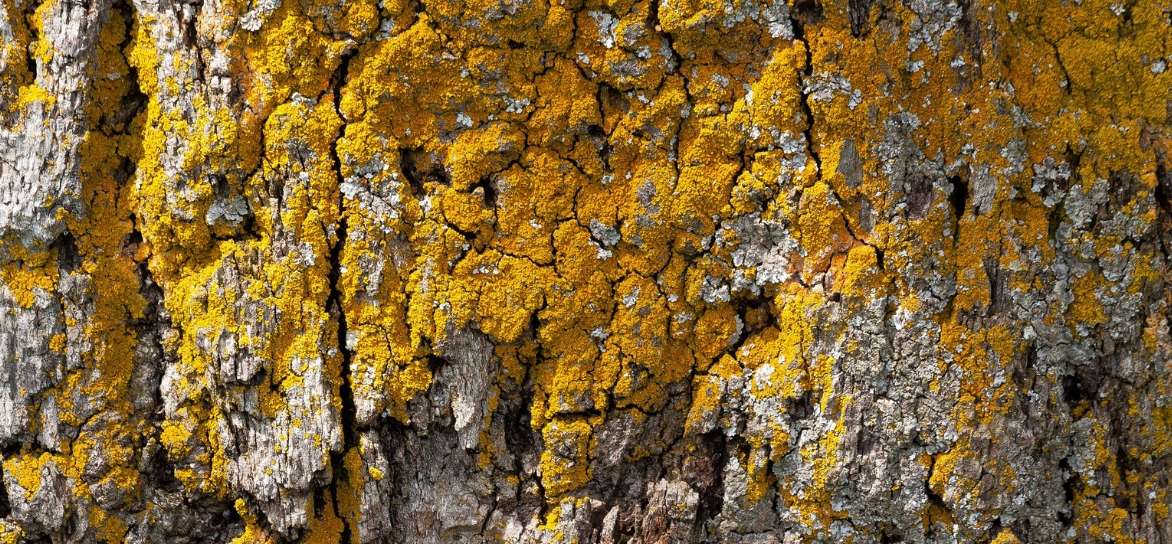 Bark of an old oak
Bark of an old oak
Multiplication
The multiplication of oaks is often done by sowing acorns, separating suckers, or by grafting at the end of winter for cultivars. The latter practice is the domain of professionals, whereas it is not uncommon to see acorns germinating in large numbers near the tree, at least in the case of native oaks. It is then easy to collect the barely germinated seedlings, taking care to extract the taproot. This ensures the deep development of roots, which can reach several dozen metres, particularly in the case of the holm oak.
Sowing
- Harvest on the ground in autumn, around the second half of October, the largest, firmest acorns of the year that are free from holes. The cupule should detach easily from the acorn. To check the quality of the acorns, immerse them in a bucket of water. Only take those that sink.
- Fill a deep pot with potting soil mixed with sand or simply with the litter taken from an oak forest.
- Place the acorns on the surface, ensuring they do not touch each other, and protect the sowing with fine mesh wire.
- The pot should remain outside for the cold stratification of the seeds, followed by germination in spring. This stratification can also be done in the refrigerator by storing well-dried seeds, buried in sawdust or turf, inside a tightly sealed freezer bag.
- After at least 1.5 months, monitor the sowing. As soon as the radicle appears, transplant the seedlings into individual deep pots of at least 15 cm in depth. Then keep the plants in light in a cool substrate.
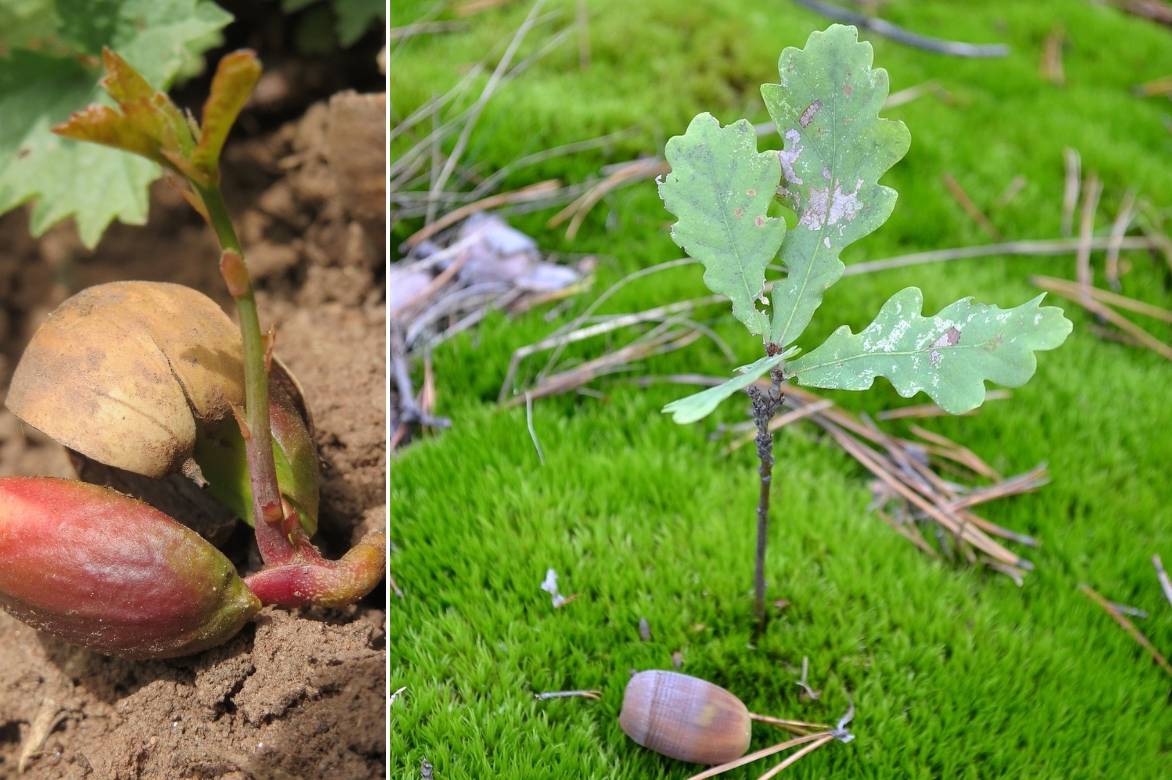 Birth of an oak
Birth of an oak
Uses and associations
Mighty and ancient oaks deserve high regard to preserve these rare witnesses of the past. Let us also plant young oaks for future generations who may not have the chance to admire and rest beneath a venerable tree. Unfortunately, oak forests struggle to reclaim soils once they have been degraded!

Majestic oak and autumn colours
Pedunculate oaks, sessile oaks, green oaks or cork oaks are subjects that deserve a prominent place in a sufficiently large garden, to mark an entrance or to highlight the edges of a field, path or avenue. They also offer the advantage of providing pleasant shade, which will restore light in winter. Quercus frainetto is a rewarding oak that will not take fifty years to adopt that respectable stature and majestic appearance that we so appreciate in these trees. You can associate them with maples, plane trees, hackberries (hardy even in the North), lindens and sophoras in a large park.
Cultivars such as the purple form ‘Purpurascens’ or golden ‘Concordia’ of the pedunculate oak exhibit lesser vigour (7 to 15 m). These trees vividly coloured in spring (Purparescens) or in summer (Concordia) will become one of the focal points of a natural garden or even contemporary garden large enough to accommodate them. Dare to create contrasts by pairing them with the golden foliage of the American locust ‘Sunburst’, spectacular in spring, the sparkling crown of a silver willow (Salix alba) or a silver poplar (Populus alba Nivea) or the violet flowering of a Sophora davidii or the bright blue of a butterfly tree or a ceanothus arborescens.
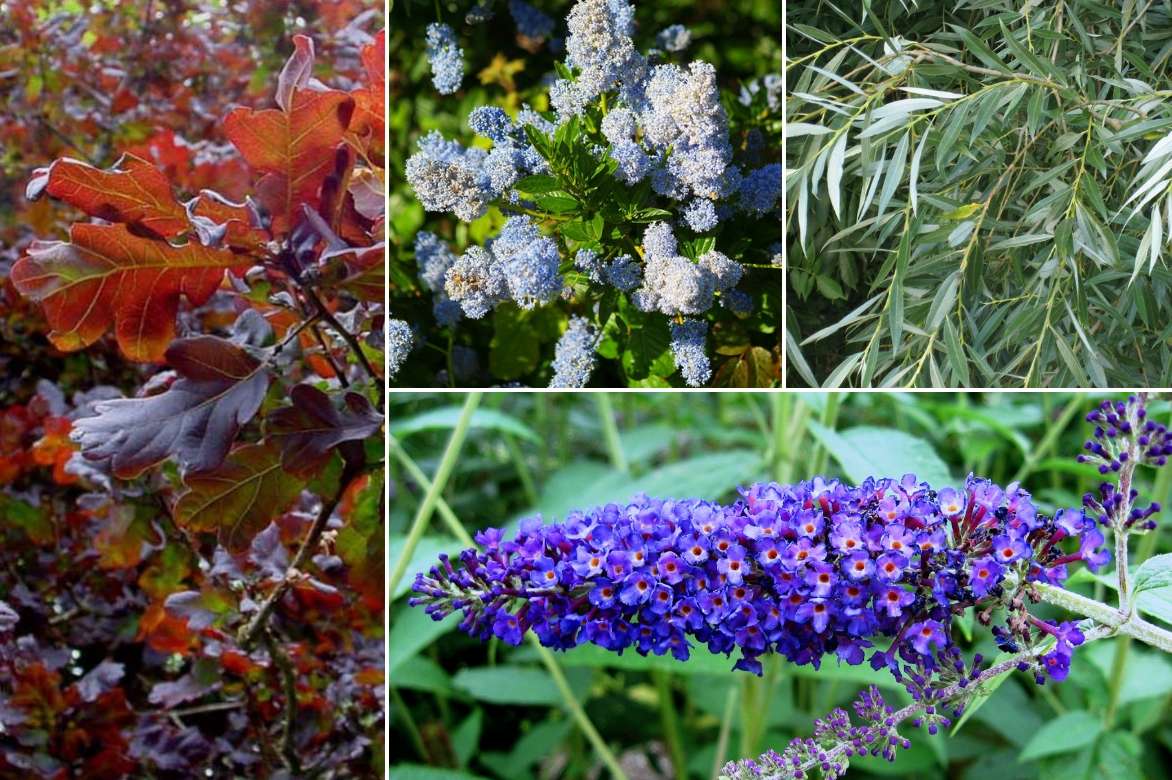
An idea for association: Quercus ruber ‘Purpurescens’, Ceanothus arboreus ‘Concha’, Salix alba and Buddleia davidii ‘Empire Blue’
American red oaks, fond of cool soils, associate splendidly with Metasequoia glyptostroboides Gold Rush, field maple and larch, which are also splendid in autumn. You can also plant at their base two species of ferns such as Onoclea sensibilis, in neutral to acidic and moist soil, in sun or partial shade, and Dryopteris palustris (Telypteris palustris), ideal in riverbank or marsh scenes, in light shade or sun.
Plant green oaks and cork oaks to recreate a fragment of garrigue in your garden by shaping a managed copse around the trunk. Plant them as isolated specimens or compose a clear grove scattered with perennials, shrubs and southern trees such as Lychnis, Salvia, Ballota, Cistus, Rosmarinus, Thymus, Teucrium, Phlomis, Bupleurum, Euphorbia and Arbutus unedo.
The Quercus myrsinifolia, which resembles a camphor tree from a distance, also naturally finds its place in a seaside garden, either isolated or in alignment. It is equally suitable in a Japanese-style garden, in front of a curtain of bamboo, accompanied by Nandinas and small conifers (Chamaecyparis lawsoniana Yellow Spire, Chamaecyparis obtusa Chirimen). To accompany its beautiful foliage from spring to autumn, you can also choose from many refined flowering Asian shrubs, such as Japanese cherry and apricot trees, deciduous magnolias, azaleas and autumn camellias that require the same growing conditions.

An idea for a Japanese-style association: Quercus myrsinifolia, Prunus incisa ‘Kojo no Mai’, Nandina domestica ‘Obsessed Seika’, Japanese azalea, Acer palmatum ‘Dissectum Garnet’ in front of a screen of large bamboos
To go further
Discover our wide range of oaks.
Check out Sophie’s advice sheet: 7 trees for seaside gardens and Gwenaëlle’s tips in: plants resistant to sea spray.
Our advice sheet: How to obtain truffles in the garden.
Frequently asked questions
-
Which oaks to choose for truffles?
The following species are most commonly used: Quercus petraea, Q. pubescens, Q. ilex. Truffle oaks are often planted already inoculated with the fungus, in shallow, cool, and well-drained soil to encourage root spreading and increase the production of the famous black gold.
- Subscribe!
- Contents
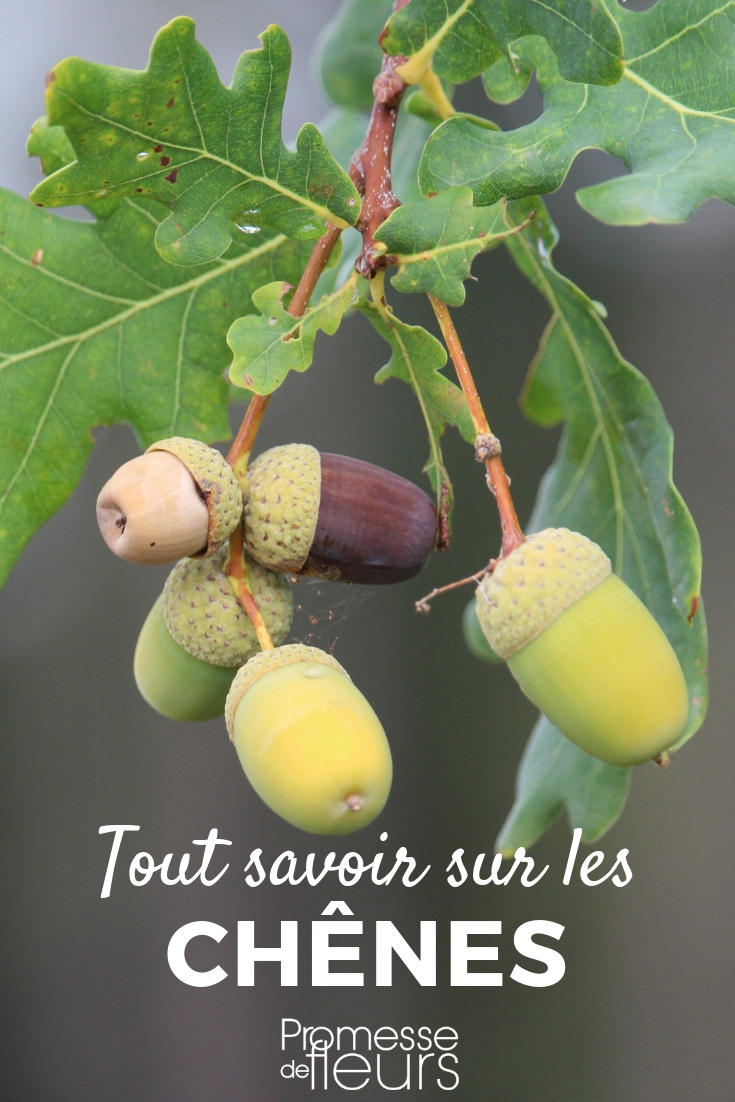
































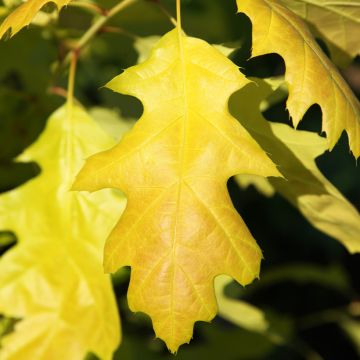


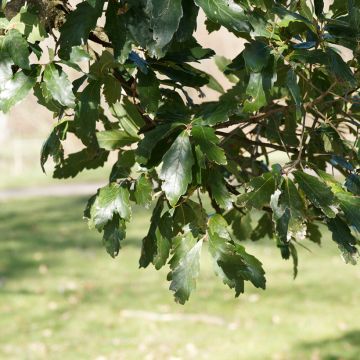
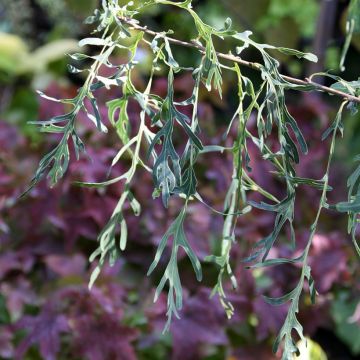
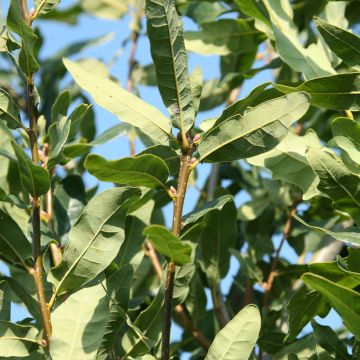
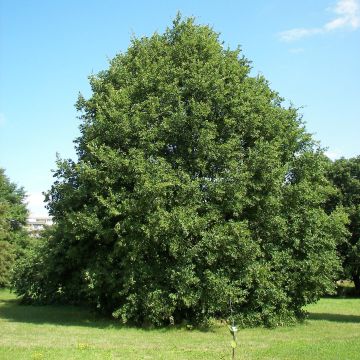

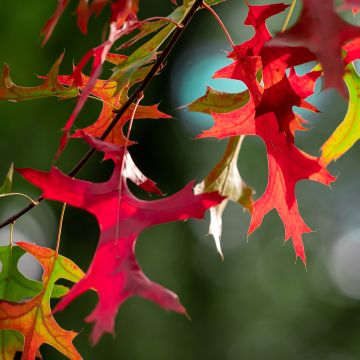
Comments